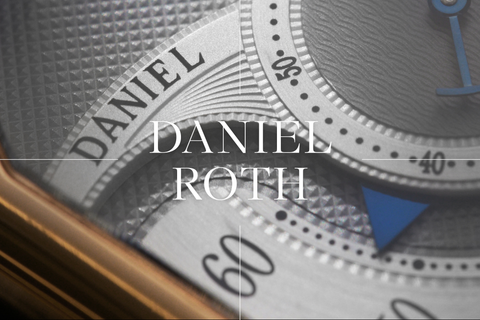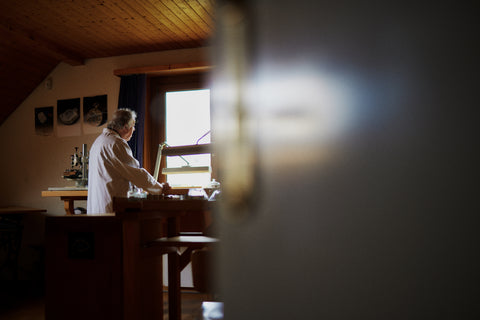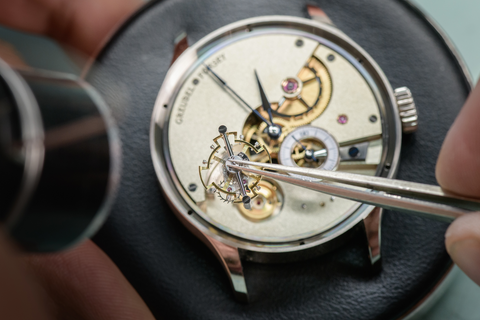The story of Breguet’s rebirth began in 1970, when brothers Jacques and Pierre Chaumet took over the historic French name with the hope of restoring it to its past glory. Shortly thereafter, they wound up the workshop in France and moved production to the Vallée de Joux in Switzerland.
The Chaumet brothers – at the persuasion of the brand’s director, Francois Bodet – approached master watchmaker Daniel Roth to assist in their efforts. Roth of course had demonstrated his skill over the seven years he had spent at Audemars Piguet. Inspired by the prospect of leaving his mark on a historic name such as Breguet, Roth agreed to take on the challenging role. However, he did so only after spending a year studying the brand’s archives and traditional techniques.
What followed was three years of research and development, during which Roth collaborated closely with Lemania, the historic movement manufacturer, to create the manually wound calibre underpinning the reference 3350. This reference, first seen in 1988, had at its heart the calibre 558. It featured a one-minute tourbillon that was proudly displayed on the dial side. Anchored by a pocket watch-style straight bridge that is horizontally satinated, the three-armed tourbillon carriage is finely decorated with black polishing. It features a three-armed seconds indicator, with each arm taking turns making its way across the 20-second chapter on the dial side.
The movement’s mechanics are all but hidden from view by the gold baseplate that is adorned with beautiful and extensive floral engravings done by hand. This is in addition to the etchings detailing technical aspects such as the 21 jewel count and adjustment to six positions. These details are visible through the exhibition caseback, as are the brand mark and serial number achieved in an elegant calligraphic font. Additionally, the words ‘Brevet du 7, Messidor an 9’ frame the tourbillon aperture on the movement side – this is the date according to the French Republican Calendar (June 1801) when Abraham-Louis Breguet was granted a patent for his signature invention, the tourbillon.
This example of the reference 3350 is cased in yellow gold, a metal suited to the piece’s classicality. The case, 36mm across, features a rounded bezel and caseback framing the coin-edge midcase. This fluted detail is repeated in the form of the well-sized crown. The display caseback bears the brand mark and serial number. The lugs, 18mm apart, are slim and minimal from atop and in profile. The black, alligator grained Breguet strap affixed by screwed lugs, are secured by a similarly screwed, yellow gold pin buckle.
The solid silver dial is textured with barleycorn guilloché across its outer reaches. The time display is framed by satiné circulaire rings that house the applied minute plots and chapter of Roman hours. The two chapters are separated by a sauté piqué rim. This detail also marks the top edge of the partial seconds chapter that straddles the bottom of the time display.
The dial inside the time display wears clous de Paris engine turning, interrupted only by the arc bearing the brand mark and serial number. The hands, Breguet-style of course, are heat blued, same as the three-armed indicator atop the tourbillon. The baseplate, visible through the tourbillon aperture, is adorned with the same floral engravings found on the movement side. The quality of being able to see through the tourbillon, sandwiched on both sides by sapphire crystals, lends the dial additional elegance.
The watch comes with original warranty paperwork from 1990, as well as original inner and outer boxes. This early example of the Breguet Tourbillon reference 3350 bears the aesthetic hallmarks of the historic brand, distilled by a master watchmaker of Roth’s calibre. The code he established with pieces such as the reference 3350 continues to guide Breguet even today.
If sold within the United Kingdom, this Breguet Tourbillon will be subject to 20% VAT












































































































































































































